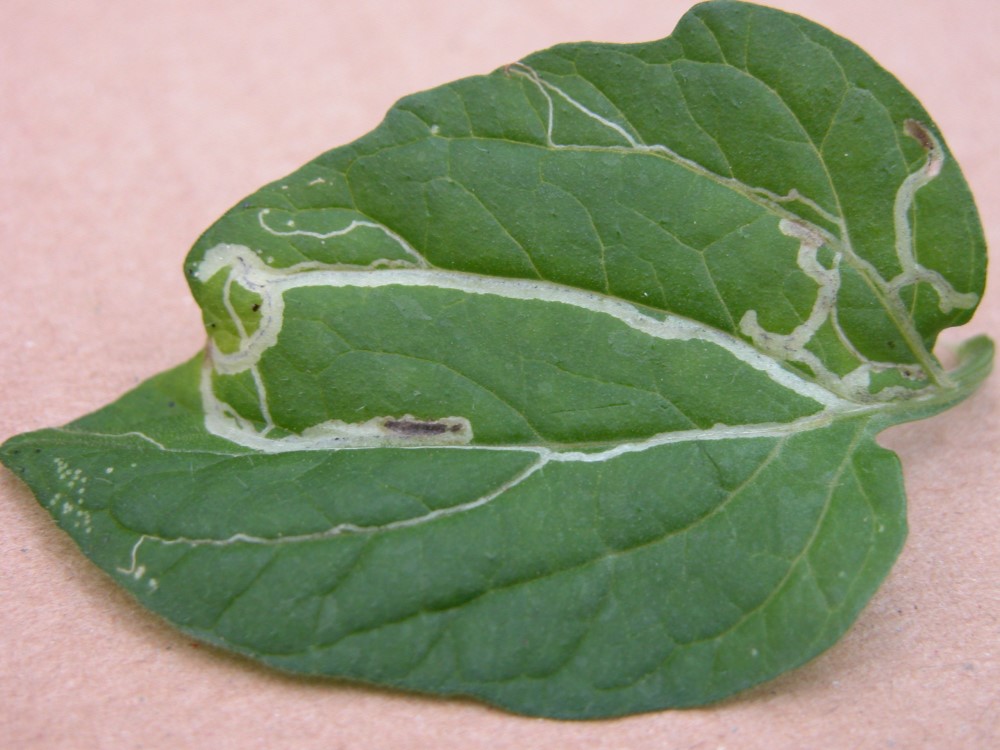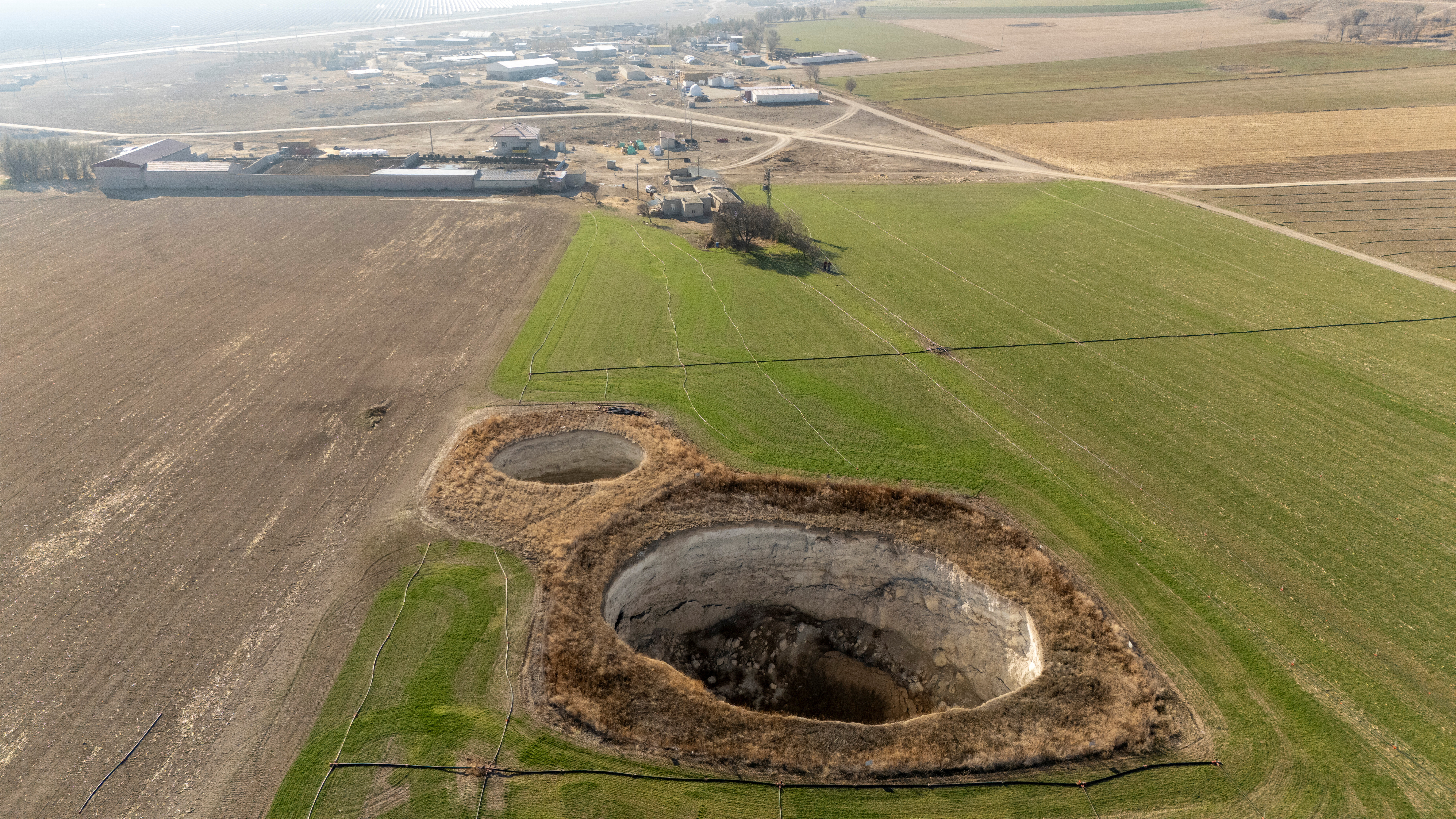Adult feeding
Shape of mines
Damage to plant growing points
Under some conditions, which are not yet fully understood, young Tuta absoluta larvae migrate to the top of the plant where they graze more openly on the furled leaves. This is potentially very serious because it can rapidly result in destruction of the growing point. Liriomyza larvae do not cause grazing damage to the growing point as described for Tuta absoluta. However, when populations are very large, excessive feeding by adult Liriomyza can cause direct damage to young plant growth.Damage to leaf petioles and stems
Fruit damage by Tuta absoluta













